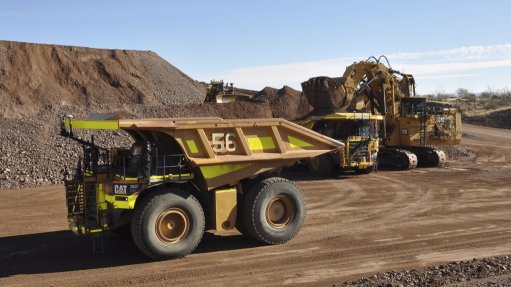
MINESTAR EDGE Automating the production recording process and provides access to business insights in near real-time. This provides an opportunity to improve operations within each shift
Earthmoving technology supplier Caterpillar’s new cloud-based technology platform, MineStar Edge, can be used to manage production cost effectively, particularly on small surface mines.
“Many smaller mines rely on people, often haul truck operators, to manually record production information on paper load sheets. As a result, mine managers often receive inaccurate information, usually at a time when they are no longer able to affect the outcome within the working shift,” states Caterpillar technology solutions consultant Sedric Waguespack.
MineStar Edge automates the production recording process and provides access to business insights in near real-time. This provides an opportunity to improve operations within each shift.
Edge allows for the visibility of an entire mining operation and enables managers to see how activities early in the process impact those further down the value chain. The technology provides an automatic, highly accurate means of measuring the current operation, including actual payload.
It also uses technology advancements such as data infusion, machine learning and artificial intelligence, consequently allowing for the platform’s continual adaption and development as it collects data, identifies patterns and learns to make decisions.
This will automate data collection and enable mine managers to focus on improving operations, rather than collecting and interpreting data.
Caterpillar’s technology group MineStar Solutions designed the platform to augment the Caterpillar MineStar Solutions suite of technologies and align it with the way many mining operations manage their businesses.
The product was developed and validated with the cooperation of several customers at their sites in the US and Australia. The initial product was released in January last year.
Waguespack emphasises that its design makes Edge cost effective for smaller operations, with the capability to scale up when needed.
He also notes design features that would be beneficial for smaller mines.
The solution has been proven to deliver quantifiable results, in line with traditional fleet management systems, at a fraction of the investment. This lowers the previous barriers to entry faced by smaller mines with smaller revenue streams.
Additionally, it also requires minimal input, enabling miners, particularly with smaller labour complements, to focus on the business, and not system support.
Edge supports flexibility in communications network types and in-pit coverage, which enable miners to match networks with their needs and budget. The solution’s being cloud-based also decreases the need for on-site information technology, expertise and expense.
“Once an operation gains insight into its current performance, it can identify where in the process an improvement needs to be made. Loading-equipment operator consistency is often a root cause of underloading and can often be improved with additional training and communication of results.”
Automation in Mining
Caterpillar mining automation applications consultant Jag Samaraweera explains that automation in mining is evolving rapidly – benefiting equipment operators and expanding the potential workforce.
“Automation reduces the inputs and interactions required of onboard operators, as it works in the background and controls functions, while accurate data gathering enables accurate real-time decisions. Secondly, distant remote operations are enabled, which expands the available workforce further.”
Samaraweera emphasises that, while the advantages of automation are abundant, there are challenges to overcome when implementing fully and semiautonomous systems. He cites the significant learning curve that accompanies the introduction of these technologies to a site.
“Challenges include training people, getting them to be comfortable with the technology and adjusting existing processes. This is where Caterpillar’s experience with change management has helped miners adapt to new technology and see productivity gains quickly.”
Additionally, while customers will use the technology similarly, their performance goals may vary. This would require different approaches in order to fully use and reap the benefits of automation.
Owing to this, Caterpillar works with miners to employ new technology and has created training programmes for miners to use and upskill employees.
One such programme is autonomous hauling, which provides safety and productivity as two of the main benefits.
Samaraweera highlights the Caterpillar Command for hauling system, which is designed to deliver high production and safe operation of mining trucks, and has been proven to in application.
For seven years of operation the Command system has been used for hauling, moving more than two-billion tonnes, with zero lost-time from injuries with the system in use. About 300 mining trucks are now operating autonomously with Command technology.
Caterpillar Command can also be used for dozing, according to Caterpillar product development manager Kent Clifton. It is a semiautonomous dozer operating system, which enables one operator to manage as many as four dozers from a remote location.
It also enables operators to work in a safe environment, without exposure to noise and vibration. Remote management of dozers also removes operators from high-risk locations, such as unstable ground.